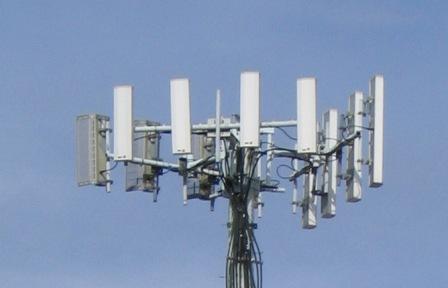
About 4 billion people worldwide use cellphones. Researchers have been debating for years on whether the radiation from cellphone use leads to health hazards such as cancer and other illnesses.
Perhaps, in no greater proof of how hot the debate is, infomercial peddlers such as Kevin Trudeau and television doctors such as Andrew Weil have declared that cellphone use are one of the risk factors for brain cancer.
More scientific studies have tried to assess both short term and long term impact of cellphone usage. Yet there has been no conclusive evidence so far. That’s because earlier research studies didn’t have a pool of users available who had been on their cellphones long enough, says Naidenko.
“A lot of the studies that came out in 2000 and 2001 only looked at short term exposure, which is about four to five years and they didn’t see any risks from radiation,” she says. “But now that we see results from long term studies, we are seeing more evidence to the contrary.” Still Naidenko says the EWG’s data doesn’t conclusively prove a link between cellphone radiation and health risks.
Henry Lai, a professor of bioengineering at the University of Washington who has researched the issue in the past, reviewed EWG’s report and says the group is on the right track.
“There’s no solid conclusion right now on whether cellphone use leads to increased health risk,” he says. “But all the data shows cause of concern, and that’s very well brought out in the report.”
Cellphone radiation is transmitted by the antenna and the circuitry inside the handset by sending out electromagnetic waves (radio frequency radiation) to transmit their signal. The radiation emitted by the antenna is not directional, which means that it propagates in all directions more or less equally. Factors such as the type of digital signal coding in the network, the antenna design and its position relative to the head determine how much radiation is absorbed by a user, says EWG.
Other household appliances, such as microwave ovens, emit radiation, but no other device is in such close contact with the human body as a cellphone. “You don’t put your head inside the microwave,” says Lai. “And unless you are standing very, very close to it, the radiation from microwaves is very low.”
The Federal Communications Commission sets the acceptable U.S. radiation standards for cellphones. The effects of the radiation depend on the rate at which energy is absorbed by a mass of tissue. This is called as the Specific Absorption Rate (SAR) and measured in watts per kilogram (W/kg). Most handset makers use private certification companies to test the SAR on their devices.
Based on a recommendation from industry group, IEEE, the FCC limits SAR levels for partial-body exposure (including head) to up to 1.6 W/kg, and whole body exposure to up to 0.08 W/kg. For hands, wrists, feet, and ankles, the limit is up to 4 W/kg, averaged over 10 grams of tissue.
Over a while studies will give the clear scientific evidences. Until then it is recommended to not use mobile phones a long period of time or use them with cellphone accessories to keep away from the head.




Every article I read on here is spammed with comments! You guys should start using recaptcha or something…
Thanks man awesome
i really like your blog do u write your own posts or you outsource the work to someone else. because i have a couple of blogs and i have a really hard time updating all of them.
Thanks
OMG I nearly fell off my chair when I saw your blog light up on my reader alert.
You’ve build such a great rapport, I know I’m not the only one.
Keep up the good work. I just recently found your site/blog and I would hope that there are more people like you, out there. Now, back to reading….
Thanks I will be looking forward to your new posts. But now I will have some time to put some of your previous advice into action.
Many thanks for your appreciations. You can follow us on myspace.com/infogreenglobal